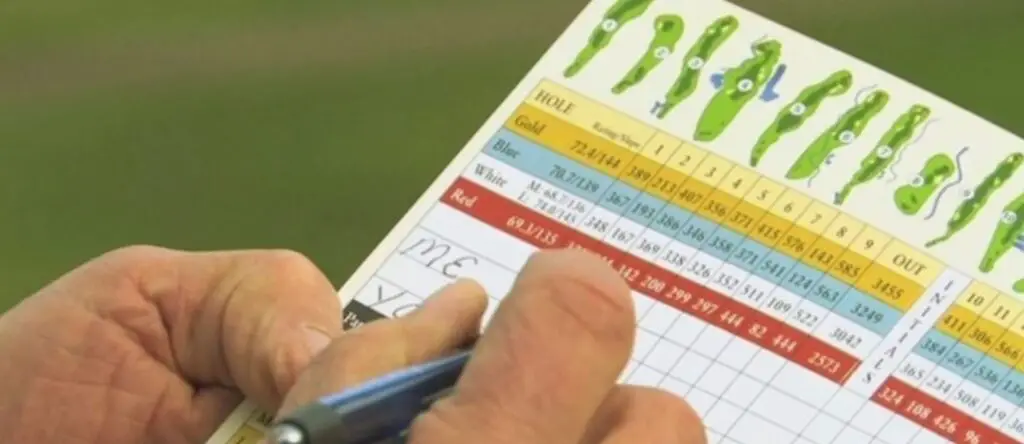Calculating your golf handicap is an essential part of the sport for amateurs and professionals alike. It levels the playing field, allowing golfers of different skill levels to compete fairly against each other. Here’s a step-by-step guide on how to calculate your golf handicap.
Understanding Golf Handicap
A golf handicap is a numerical measure of a golfer’s potential ability. In simpler terms, it represents the number of strokes over par a golfer is expected to make on a course of standard difficulty. The lower the handicap, the better the golfer is relative to others with higher handicaps.
Step 1: Record Your Scores
The first step in calculating your handicap is to gather scores from rounds of golf you’ve played. To establish a handicap, you generally need a minimum of five 18-hole scores, but the accuracy improves with more rounds, and the official calculation requires the last 20 scores.
Step 2: Adjust Your Scores
Golf rules limit the maximum score on any hole for handicap purposes, known as “Equitable Stroke Control” (ESC). This adjustment keeps unusually high hole scores from increasing your handicap too much. For example, for a handicap of 9 or less, the maximum score on any hole would be a double bogey.
Step 3: Calculate Your Handicap Differential
For each round, you need to calculate the handicap differential. This is done by subtracting the course rating from your adjusted gross score, multiplying by 113, and then dividing by the slope rating of the tees played. The formula is:
Handicap Differential=((Score−Course Rating)×113Slope Rating)Handicap Differential=(Slope Rating(Score−Course Rating)×113)
Where:
- Score is your adjusted gross score.
- Course Rating tells you the average score a scratch golfer might be expected to make.
- Slope Rating measures the difficulty of a course for bogey golfers relative to scratch golfers.
Step 4: Calculate Your Handicap Index
After you have at least 20 differentials, select the lowest 10 and average them. Then, multiply this average by 0.96 (or 96%) and truncate the resulting number to one decimal place to find your handicap index. This number reflects your potential ability on a course of standard playing difficulty.
Step 5: Convert to a Course Handicap
To find out how many strokes you get in a particular round of golf, convert your Handicap Index into a Course Handicap by using the following formula:
Course Handicap=(Handicap Index×Slope Rating113)Course Handicap=(113Handicap Index×Slope Rating)
This will give you the number of strokes you can subtract from your total score to adjust your playing level to the difficulty of the course you are playing.
Understanding and calculating your golf handicap is not just about figuring out how many strokes you can subtract from your score. It’s about setting personal goals, tracking your progress, and enjoying competitive golf regardless of the level of skill of the players involved. With these steps, you can accurately determine your handicap and use it to enhance your golfing experience.
Common Questions About Golf Handicaps
Let’s delve into some common questions and additional insights to help you better understand the nuances of golf handicaps.
How often should I update my handicap?
It’s recommended to update your handicap every time you play a round and post a score. Most golf clubs and handicap systems will automatically update your handicap index overnight when new scores are entered. This ensures your handicap reflects your current playing ability.
What if I play on different courses?
Your handicap index is versatile and can be applied to any course. By using the course and slope ratings, you can convert your universal handicap index to a course-specific handicap that accounts for the relative difficulty of any course you play.
Are there handicaps for nine-hole scores?
Yes, nine-hole scores can also be used to calculate a handicap. These scores are combined to form 18-hole rounds. For instance, two nine-hole rounds will pair up to create a complete 18-hole score, which can then be used just like any other full round in your handicap calculation.
What is the World Handicap System (WHS)?
Introduced in 2020, the World Handicap System unifies the six different handicap systems that were previously used around the world into a single system that allows golfers of different abilities to play and compete on a fair basis. The WHS calculates a Handicap Index consistently for all players, making it easier to play globally under one unified system.
Does weather affect my handicap?
Weather conditions are not directly considered in the handicap calculations. However, exceptionally difficult conditions can be reflected indirectly through the scores of all players that day, potentially influencing the course rating temporarily if a significant deviation in scoring is observed.
What is a handicap allowance?
In certain formats of golf competition, a handicap allowance adjusts a player’s course handicap to make the game more equitable. For example, in a match play event, allowances often reduce the course handicaps of all players in the field by a certain percentage, balancing the competitive field.
A golf handicap is a dynamic measure that reflects your potential and actual performance. It allows golfers of all skill levels to compete equitably. By understanding and accurately calculating your handicap, you can enhance not only your competitive experience but also track your progress and set goals in your golfing journey. Regular updating and mindful attention to the principles of the handicap system make it a valuable tool in the sport of golf.







